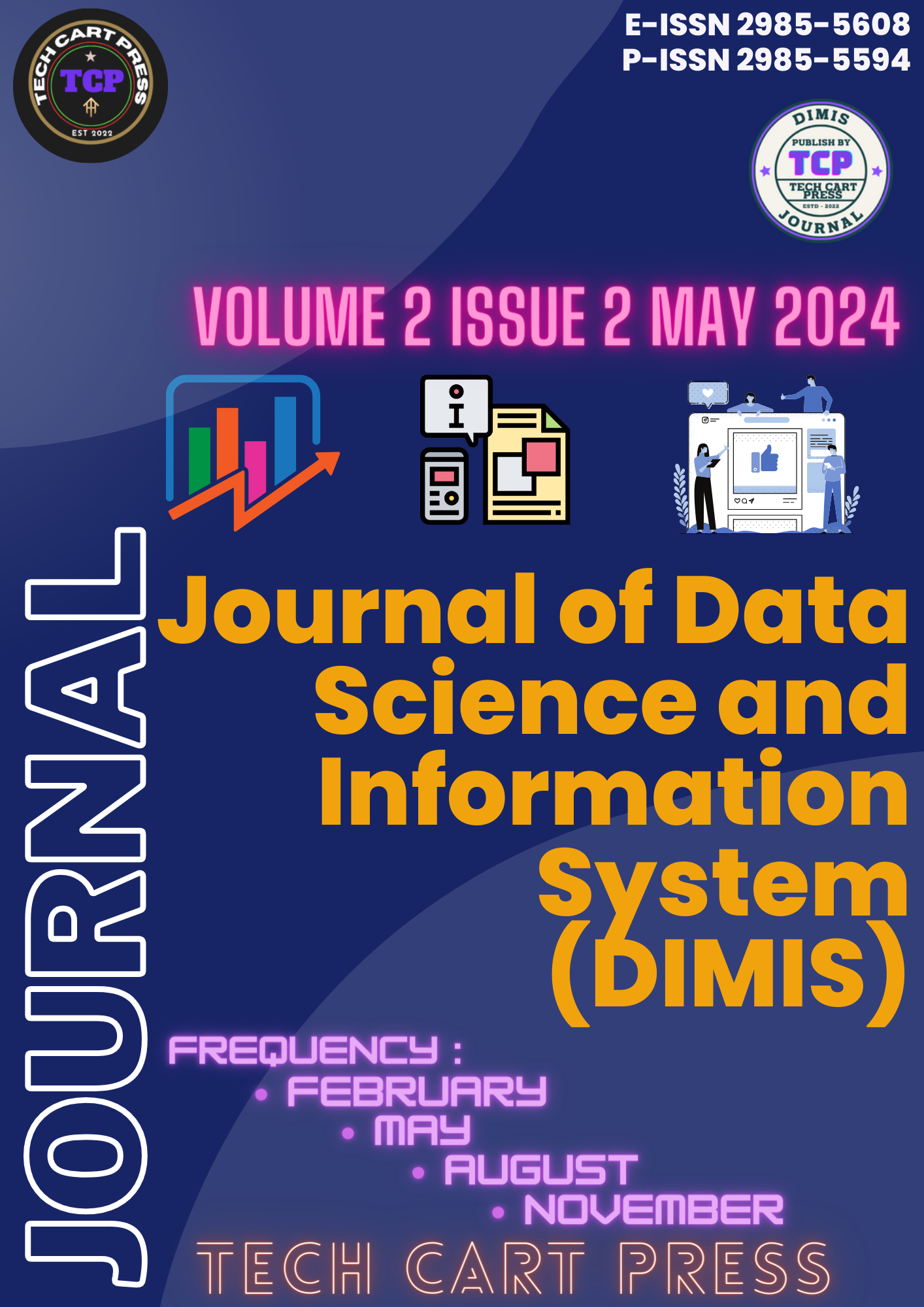Kombinasi Metode Rank Order Centroid dan Complex Proportional Assessment Dalam Pemilihan Jasa Kontruksi Perbaikan Gedung
Abstract
Building refurbishment is a process that involves restoring, maintaining, or improving the physical condition of a building so that it can function optimally and safely. The purpose of building refurbishment is to extend the service life of the building, improve user comfort and safety, and maintain the aesthetic value and investment value of the property. One common problem is the inability of contractors to complete projects according to the expected standards or within the set time limit. In addition, lack of transparency in bidding, unexpected additional costs, and lack of communication between the building owner and the contractor can also be obstacles. The combination of ROC and COPRAS weighting methods allows users to benefit from both approaches. ROC provides flexibility in determining the weight of criteria based on user preferences, while COPRAS makes it possible to handle the complexity of the relationship between criteria and alternatives. By combining the two, users can optimize the decision-making process by taking into account various relevant aspects in the evaluation of alternatives. This provides a solid foundation for assessing the relative performance of each alternative comprehensively and efficiently. The results of recommendations in the selection of building repair construction services ranked first with a value of 100% obtained by PT BPS construction services, ranked second with a value of 93.63% obtained by PT HRB construction services, ranked third with a value of 93.68% obtained by PT SKL construction services. Based on these results, it becomes a recommendation for companies to make more informed and precise decisions in selecting construction services for building repair projects.
References
A. B. Broto, M. F. R. Hasan, S. Sukarman, and I. K. Sucita, “Pendampingan Pengelola Yayasan Riyadul Falah Dalam Perbaikan Bangunan Gedung Gagal Konstruksi,” JMM (Jurnal Masy. Mandiri), vol. 5, no. 6, pp. 3476–3486, 2021, doi: 10.31764/jmm.v5i6.5438.
F. Jannah and R. Khoiriyah, “Edukasi tentang Keselamatan dan Kesehatan Kerja pada Pekerja di Proyek Perbaikan Gedung Sekolah X di Jakarta,” J. Abdimas Kesehat., vol. 6, no. 1, pp. 41–45, 2024.
P. Rani et al., “Hesitant fuzzy SWARA-complex proportional assessment approach for sustainable supplier selection (HF-SWARA-COPRAS),” Symmetry (Basel)., vol. 12, no. 7, p. 1152, 2020.
P. Citra, H. B. Santoso, and I. W. Sriyasa, “Sistem Pendukung Keputusan Pemilihan E-Commerce Menggunakan Pembobotan Entropy dan COPRAS,” J. Ilm. Inform. dan Ilmu Komput., vol. 3, no. 1, pp. 36–45, 2024, doi: 10.58602/jima-ilkom.v3i1.25.
H. B. Santoso, “Metode Pembobotan Simplified Pivot Pairwise Relative Criteria Importance Assessment dan COPRAS Dalam Penentuan Seleksi Penerimaan Guru,” J. Artif. Intell. Technol. Inf., vol. 1, no. 4, pp. 154–163, 2023, doi: 10.58602/jaiti.v1i4.84.
M. W. Arshad, “Combination of Multi-Attributive Ideal-Real Comparative Analysis and Rank Order Centroid in Supplier Performance Evaluation,” KLIK Kaji. Ilm. Inform. dan Komput., vol. 4, no. 4, pp. 2330–2341, 2024, doi: 10.30865/klik.v4i4.1677.
P. Citra and M. N. D. Satria, “Penerapan Metode Rank Order Centroid dan SMART Dalam Sistem Pendukung Keputusan Pemilihan Waitress Terbaik,” Chain J. Comput. Technol. Comput. Eng. Informatics, vol. 2, no. 2, pp. 77–87, 2024, doi: 10.58602/chain.v2i2.116.
M. A. Hatefi, “An Improved Rank Order Centroid Method (IROC) for Criteria Weight Estimation: An Application in the Engine/Vehicle Selection Problem,” Informatica, vol. 34, no. 2, pp. 249–270, 2023.
F. Mahdi and D. P. Indini, “Penerapan Metode WASPAS dan ROC (Rank Order Centroid) dalam Pengangkatan Karyawan Kontrak,” Bull. Comput. Sci. Res., vol. 3, no. 2, pp. 197–202, 2023, doi: 10.47065/bulletincsr.v3i2.232.
R. T. Aldisa, “Penerapan Metode Technique for Order Preference by Similarity to Ideal Solution (TOPSIS) Dalam Pemilihan Kepala Laboratorium Menggunakan Pembobotan Rank Order Centroid (ROC),” J. Inf. Syst. Res., vol. 4, no. 4, 2023.
Setiawansyah, A. A. Aldino, P. Palupiningsih, G. F. Laxmi, E. D. Mega, and I. Septiana, “Determining Best Graduates Using TOPSIS with Surrogate Weighting Procedures Approach,” in 2023 International Conference on Networking, Electrical Engineering, Computer Science, and Technology (IConNECT), 2023, pp. 60–64. doi: 10.1109/IConNECT56593.2023.10327119.
A. Taufik and F. Aryani, “Penerapan Metode AHP Dalam Sistem Pendukung Keputusan Penentuan Pemilihan Jasa Konstruksi,” JISICOM (Journal Inf. Syst. Informatics Comput., vol. 5, no. 2, pp. 252–258, 2021, doi: 10.52362/jisicom.v5i2.635.
T. Annisaa, I. G. Anugrah, and P. A. R. Devi, “Sistem Pendukung Keputusan dalam Pemilihan Subkon Jasa Kontruksi dengan Metode WASPAS,” Ilk. J. Comput. Sci. Appl. Informatics, vol. 4, no. 1, pp. 67–76, Apr. 2022, doi: 10.28926/ilkomnika.v4i1.450.
A. Andriyanto and R. A. Rafana, “ANALISIS PEMILIHAN PENYEDIA JASA KONSTRUKSI DENGAN METODE AHP PADA SUBBAGIAN PELAYANAN PBJ SETDA KABUPATEN PANDEGLANG,” J. Logistik Bisnis, vol. 12, no. 1, pp. 46–50, 2022, doi: 10.46369/logistik.v12i1.2254.
S. H. Hadad, M. H. Abdullah, and R. H. Hairun, “Multi Attribute Decision Making Penentuan Dosen Terbaik Menggunakan Metode Multi-Objective Optimization by Ratio Analysis dan Surrogate Weighting,” J. Ilm. Inform. dan Ilmu Komput., vol. 3, no. 1, pp. 24–35, 2024, doi: 10.58602/jima-ilkom.v3i1.24.
M. Duquesnoy, C. Liu, V. Kumar, E. Ayerbe, and A. A. Franco, “Toward high-performance energy and power battery cells with machine learning-based optimization of electrode manufacturing,” J. Power Sources, vol. 590, p. 233674, Jan. 2024, doi: 10.1016/j.jpowsour.2023.233674.
S. B. Atim, “Sistem Pendukung Keputusan Pemberian Kredit Koperasi Simpan Pinjam Menggunakan Metode MARCOS dan Rank Order Centroid,” J. Ilm. Inform. dan Ilmu Komput., vol. 3, no. 1, pp. 1–12, 2024, doi: 10.58602/chain.v2i2.116.
S. Kayapinar Kaya and E. Aycin, “An integrated interval type 2 fuzzy AHP and COPRAS-G methodologies for supplier selection in the era of Industry 4.0,” Neural Comput. Appl., vol. 33, no. 16, pp. 10515–10535, 2021.
C. Y. Ng and K. M. Y. Law, “Eco-performance evaluation of product designs – an integrated fuzzy complex proportional assessment with life cycle assessment,” Enterp. Inf. Syst., vol. 18, no. 3, p. 2300995, Mar. 2024, doi: 10.1080/17517575.2023.2300995.
A. F. O. Pasaribu and D. Pasha, “Rekomendasi Penentuan Kelas Unggulan Menggunakan Metode Complex Proportional Assessment Dan Step-wise Weight Assessment Ratio Analysis,” Swarnadwipa, vol. 1, no. 2, pp. 35–43, 2024, doi: 10.58602/mediaswarnadwipa.v1i2.52.
Copyright (c) 2024 Vederico Pitsalitz Sabandar

This work is licensed under a Creative Commons Attribution-ShareAlike 4.0 International License.






